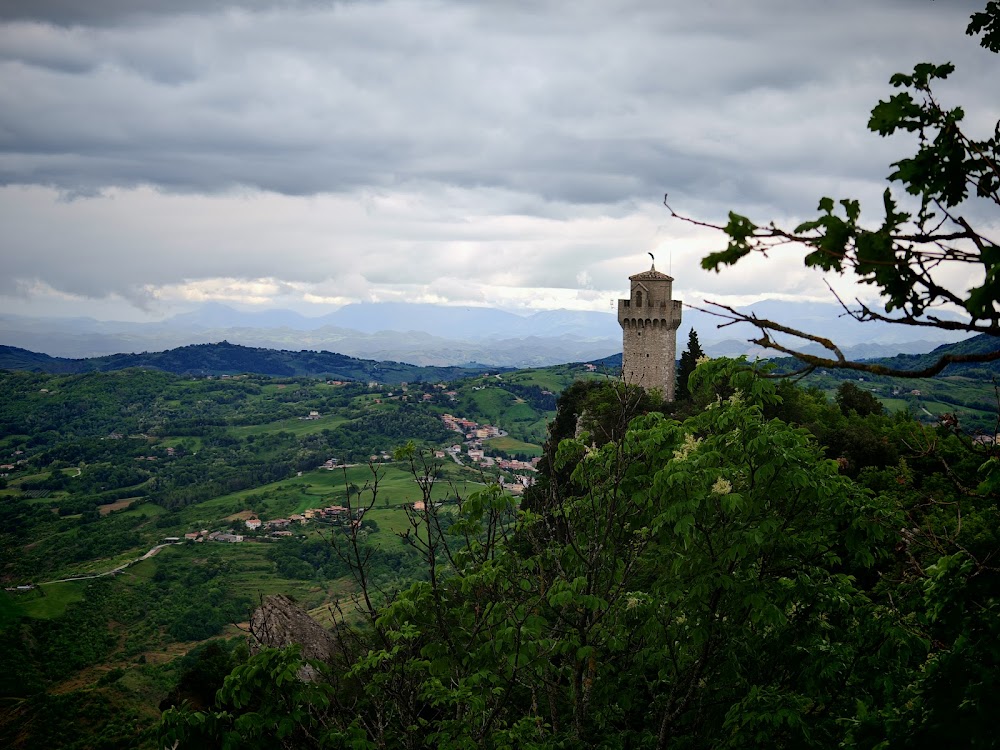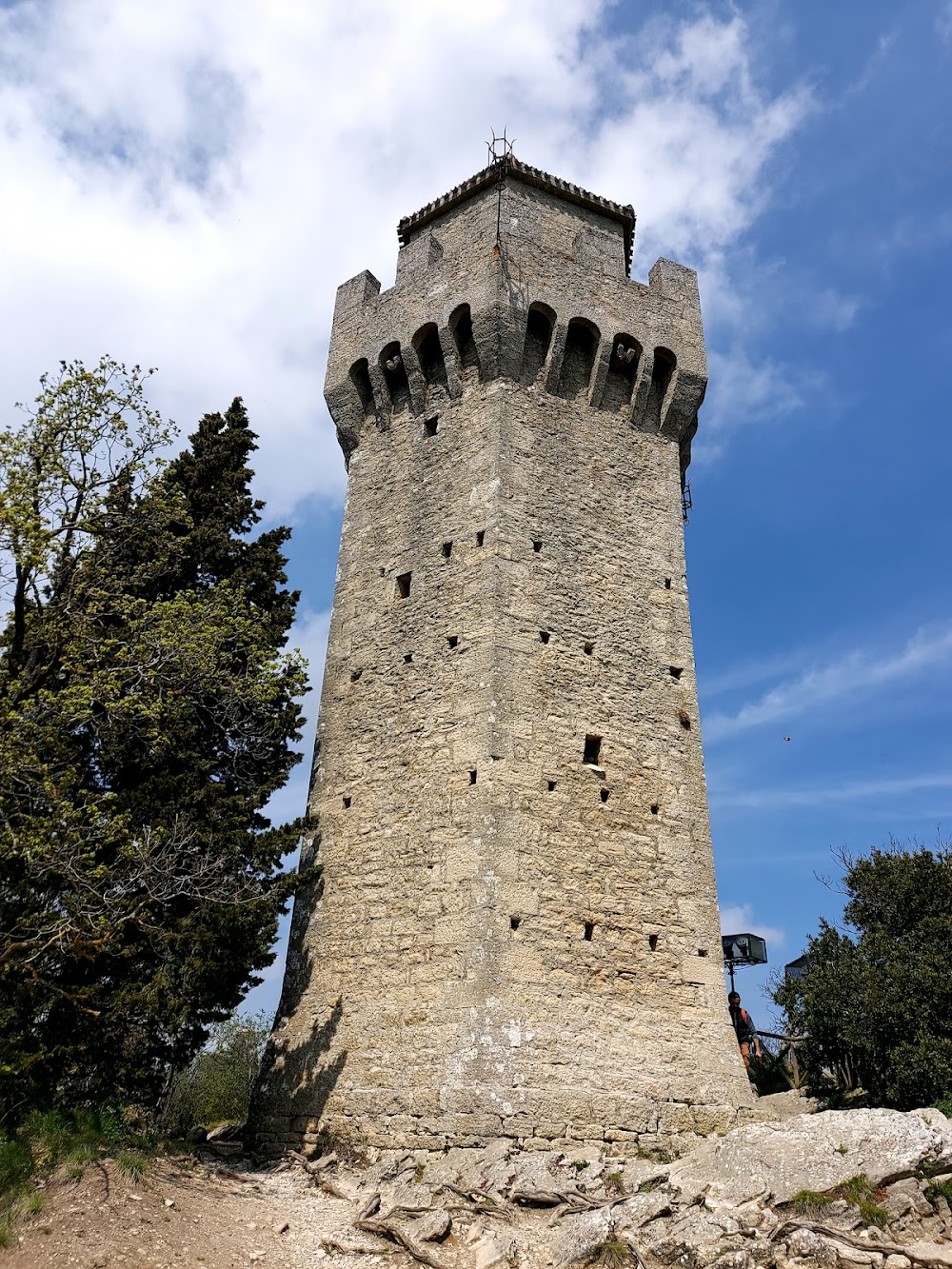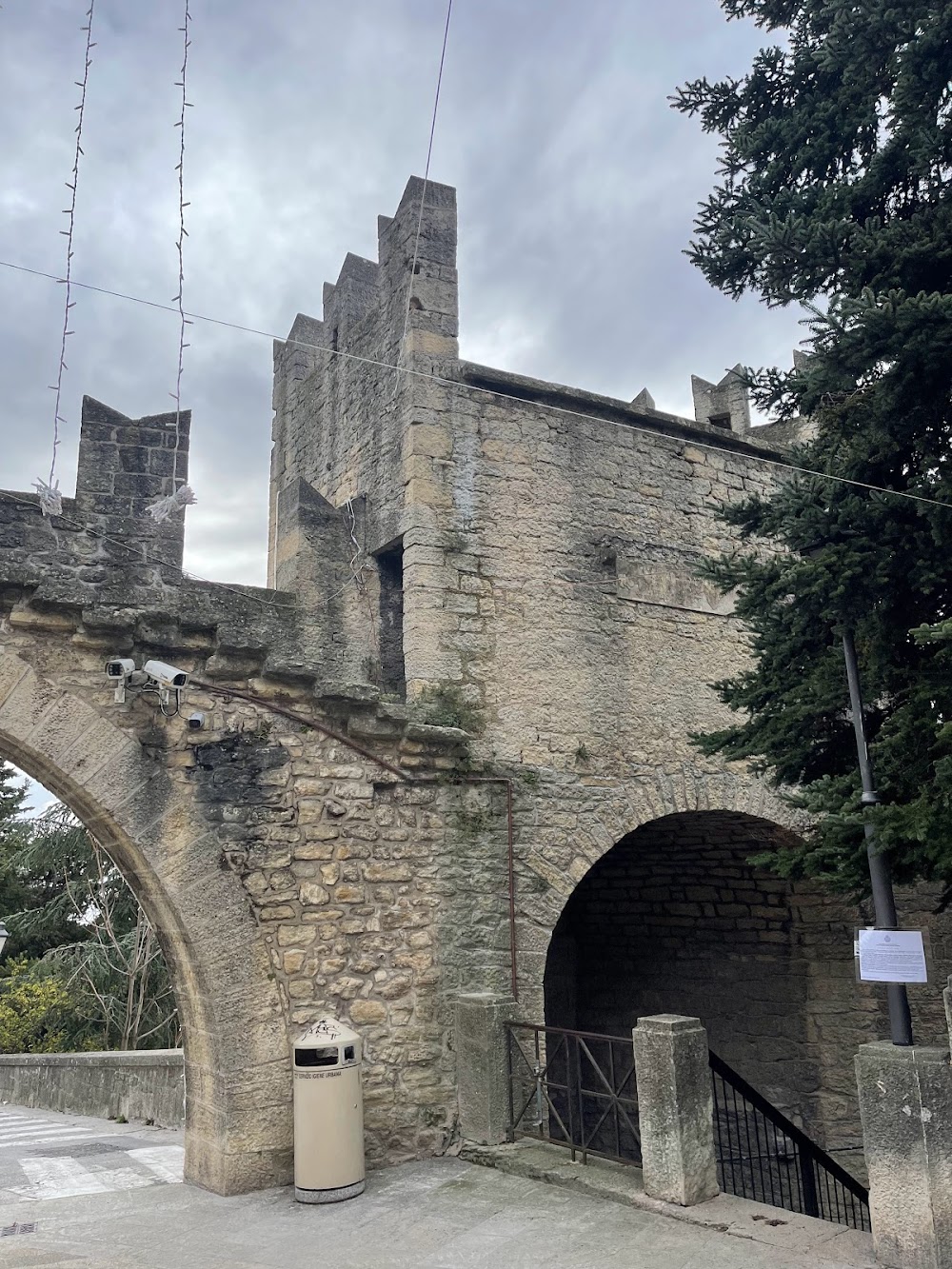Montale Tower (Terza Torre)
Overview
The story of the Third Tower, also known as Montale, in the city of San Marino, begins in the late 13th century. Perched on the peak of Monte Titano, Montale was constructed later than its two famous counterparts, Guaita and Cesta. It played a crucial role in the defense strategy of San Marino, ensuring the safety and security of this historic republic.
Montale was primarily built for military purposes. Strategically positioned to survey the surrounding landscape, it served as an advanced outpost to detect potential invaders. Its vertical, rectangular structure, with rugged stone walls, stands as a testament to the medieval fortification techniques of the time.
Constructing Montale was a remarkable engineering feat for its era. Local artisans and laborers utilized limestone sourced from the area, meticulously chiseling each block to fit seamlessly together. This careful craftsmanship resulted in a solid fortification that has withstood the test of time. Given the challenging terrain of Monte Titano, transporting heavy stones to the summit required both ingenuity and immense human effort.
As the tower rose, it received various additions that enhanced its defensive capabilities. One of Montale’s most distinctive features is its single entrance, located several meters above the ground. Initially, access was granted via a removable wooden ladder, which attackers could not scale if pulled up. Inside, narrow staircases and strategically placed windows allowed defenders to repel invaders effectively while minimizing exposure to enemy attacks.
The tower consists of multiple floors, each designed for specific defensive functions. These included storage for weapons and supplies, lookout points, and living quarters for the guards. The top floor provided a panoramic view, allowing for clear lines of sight for miles around, which was crucial for communication between the three towers during emergencies.
Montale also hosts an underground prison, known as the ‘prisoner pit’ or ‘oubliette.’ This chilling chamber lacked a door and featured only an opening through which prisoners were lowered, making escape nearly impossible. The harsh conditions of this dungeon served as a deterrent for potential criminals and enemies.
Despite its martial origins, Montale’s significance extends beyond mere warfare. It symbolizes the resilience and independence of San Marino. As one of the world's smallest and oldest republics, San Marino has always emphasized its autonomy and strength, with Montale standing proudly as a monument to its rich historical legacy.
By the 16th century, advancements in military technology began to render traditional towers like Montale obsolete. The invention of gunpowder and cannons made thick stone walls insufficient for defense. Consequently, the tower transitioned from a military bastion to a cherished historical landmark.
Today, Montale is an integral part of San Marino’s rich heritage. Though it is less accessible than Guaita and Cesta, it attracts tourists and history enthusiasts who journey up Monte Titano to explore this medieval edifice. The tower's austere beauty and storied past offer a tangible link to the centuries of history that shaped San Marino.
Montale stands as a testament to the skill, perseverance, and spirit of the people of San Marino. Its survival through the ages reminds us of a time when vigilance and strength were paramount for this tiny republic to thrive amidst larger, more powerful neighbors.






